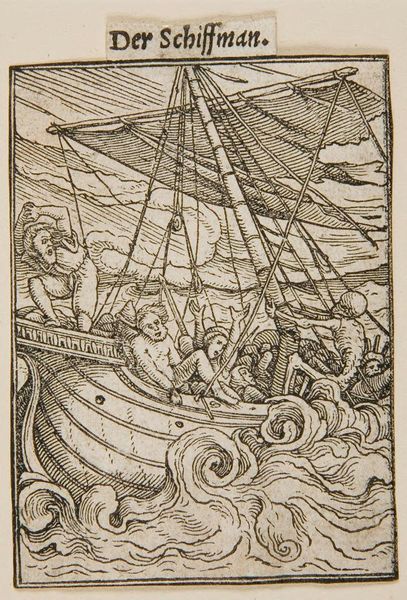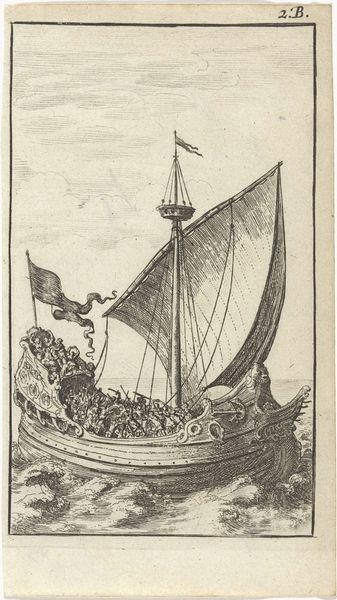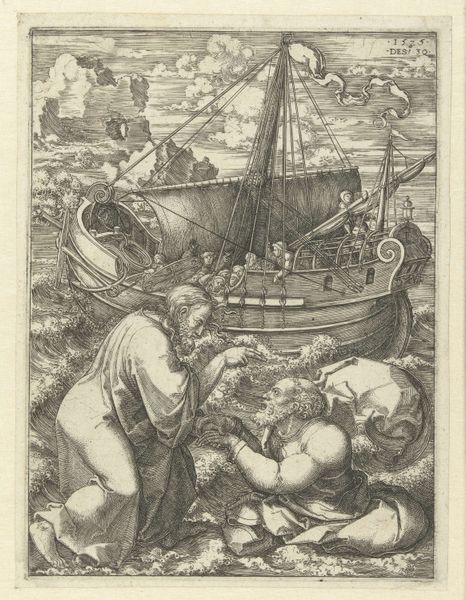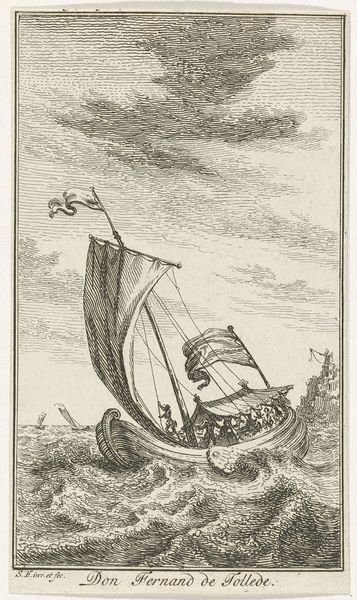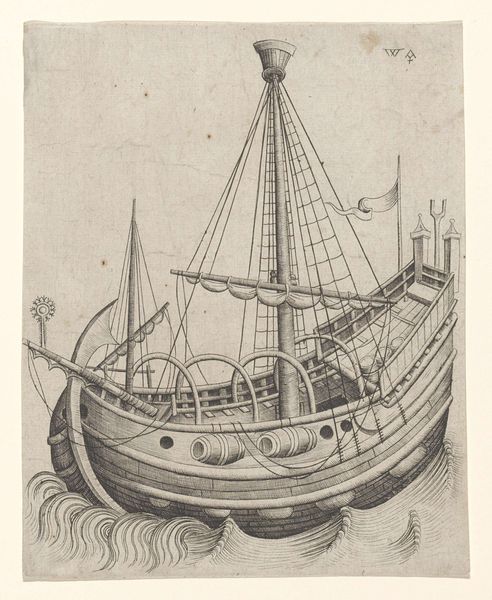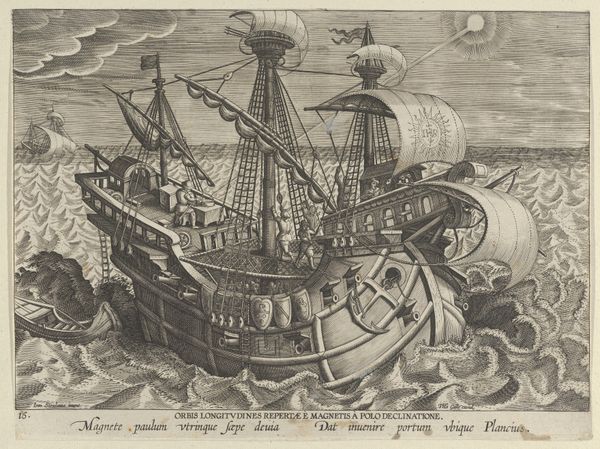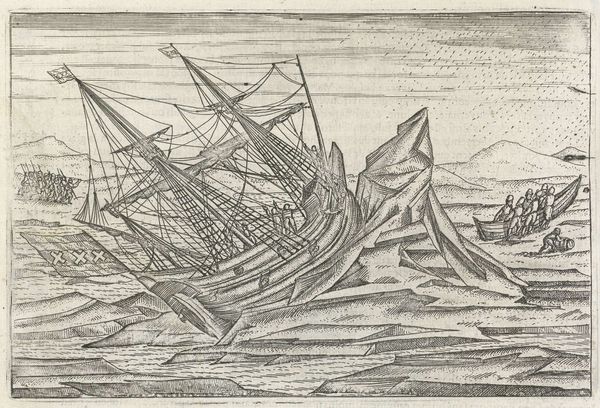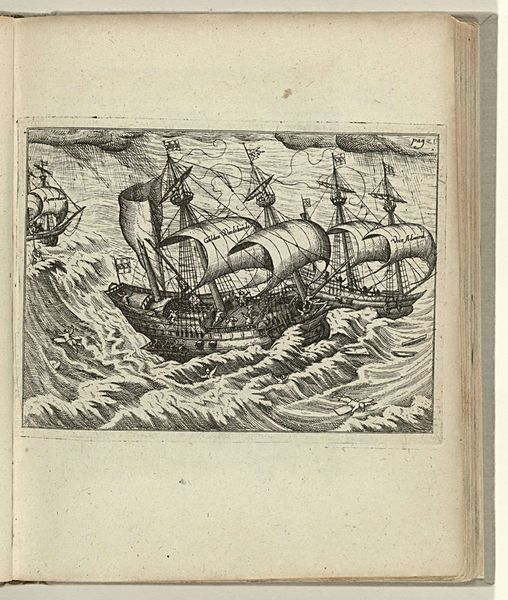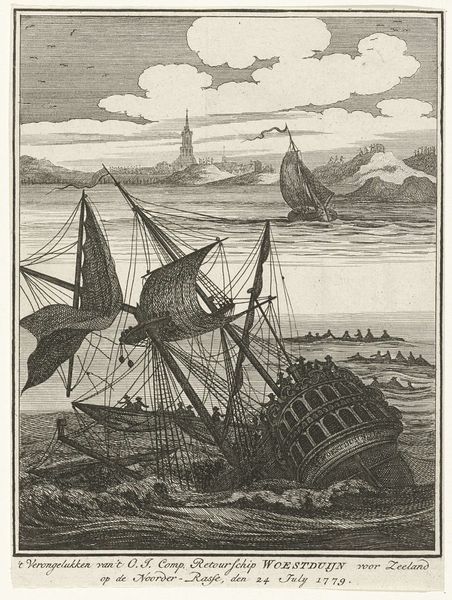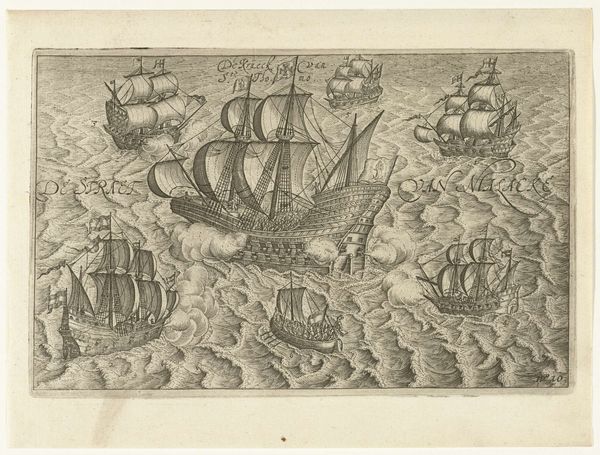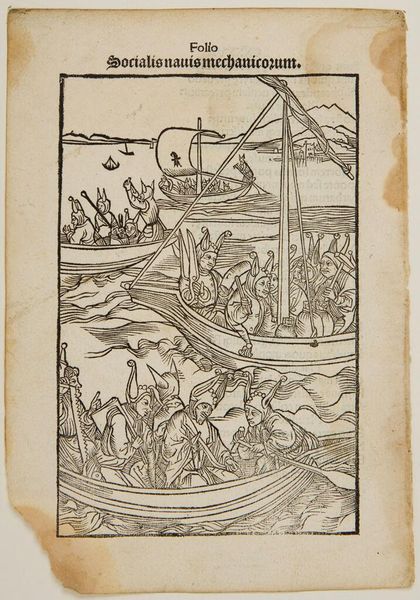
print, woodcut
#
narrative-art
# print
#
pen sketch
#
old engraving style
#
figuration
#
woodcut
#
line
#
pen work
#
history-painting
#
northern-renaissance
Dimensions: height 65 mm, width 50 mm
Copyright: Rijks Museum: Open Domain
This engraving, titled "Schipper en de Dood," was made by Hans Holbein the Younger, sometime in the first half of the 16th century. Holbein, a master of printmaking, created this image by carefully carving lines into a block of wood, likely boxwood, a dense material ideal for fine detail. The stark contrast between the black ink and white paper gives the scene a dramatic quality. Holbein’s mastery is evident in the meticulous cross-hatching, which creates a sense of depth and texture, particularly in the turbulent waves and the billowing sails. The linear quality of the woodcut emphasizes the scene's chaos: a ship overtaken by Death himself. Woodcut production demanded precision and skill, a labor-intensive process. Each print required careful inking and pressing, making them relatively accessible compared to paintings, and aligning them with the rise of a merchant class, newly interested in art. The medium carries its own message; in this case, Holbein brilliantly uses it to underscore the precariousness of life, where even a skilled tradesman is vulnerable to the whims of fate.
Comments
No comments
Be the first to comment and join the conversation on the ultimate creative platform.
